








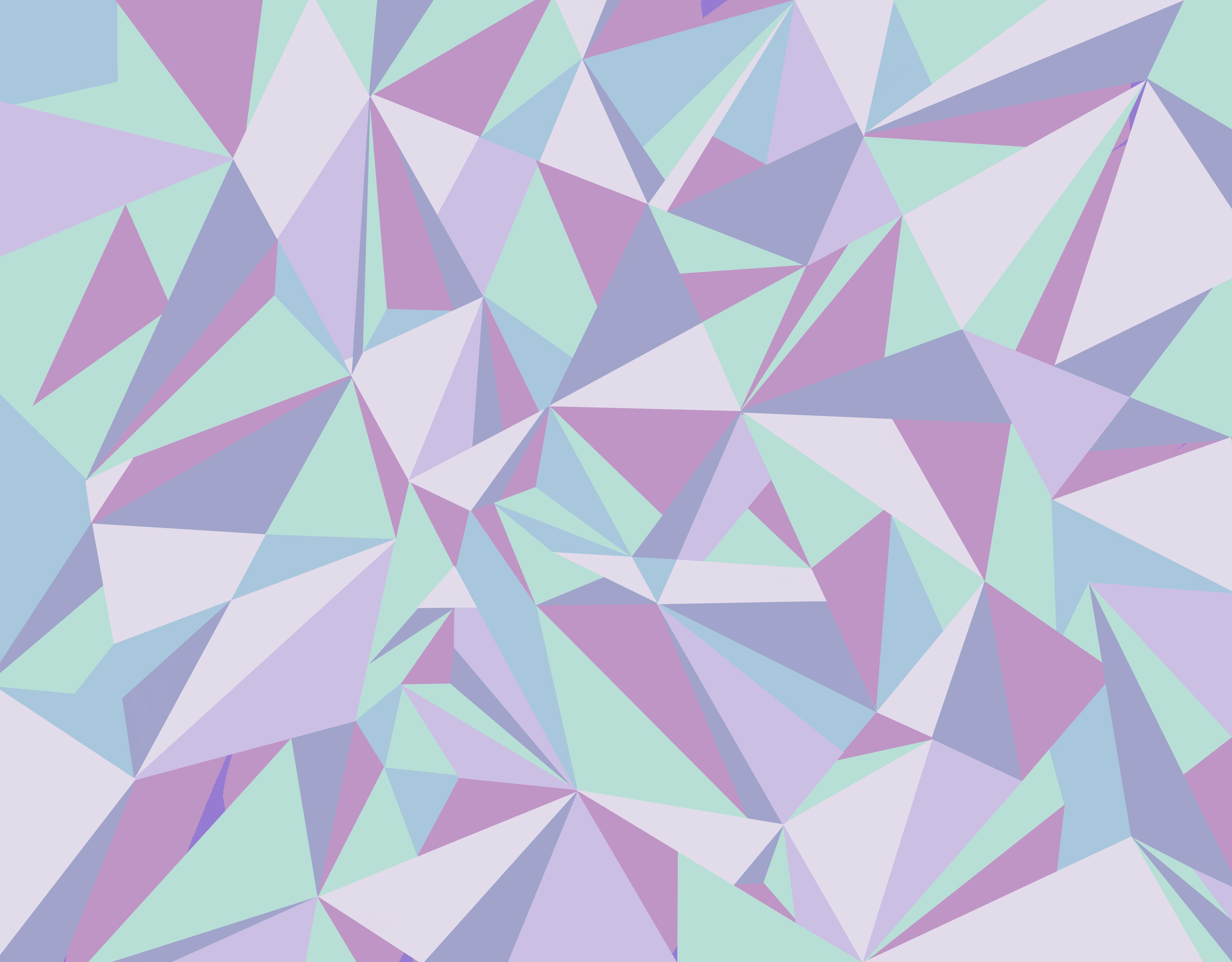
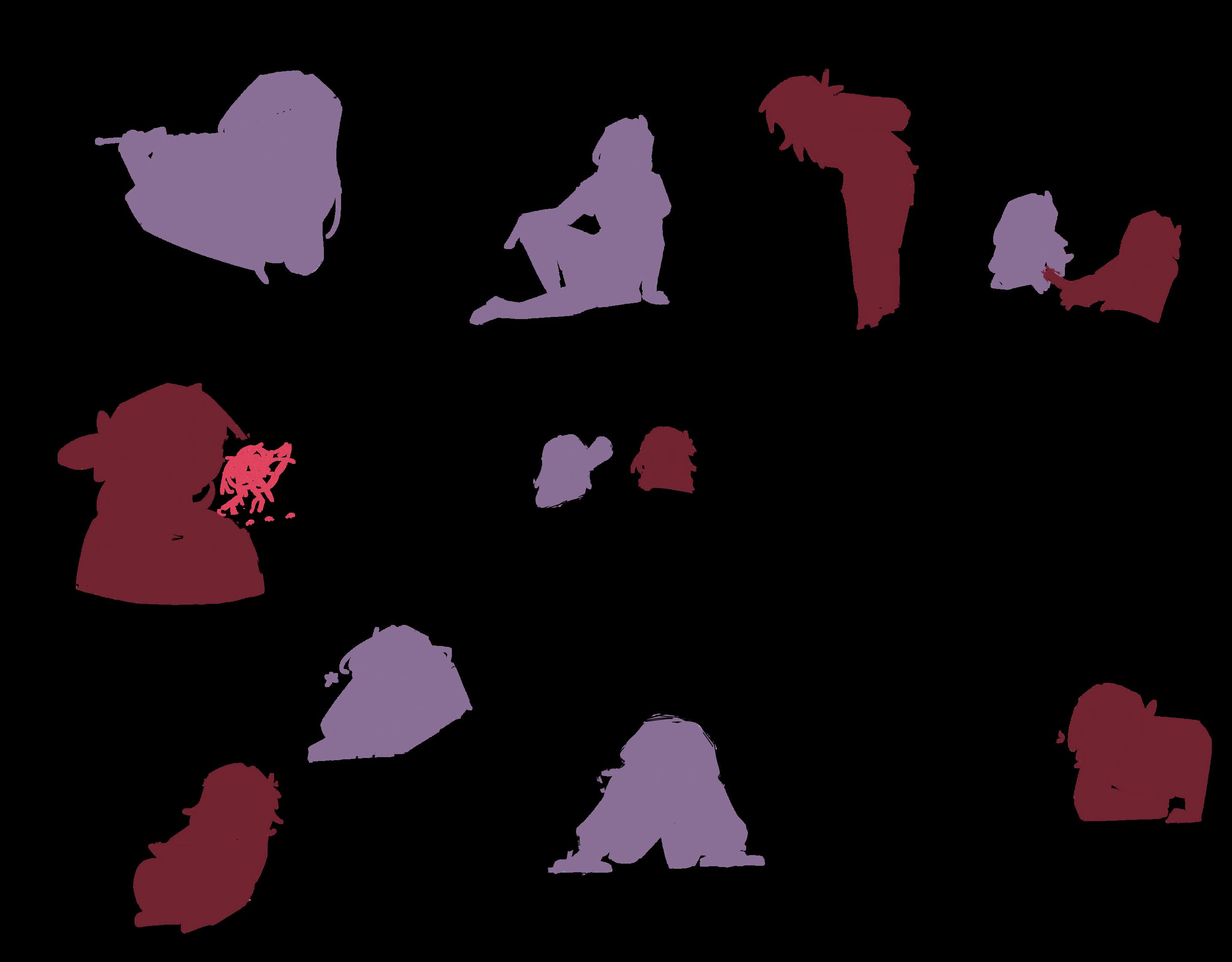
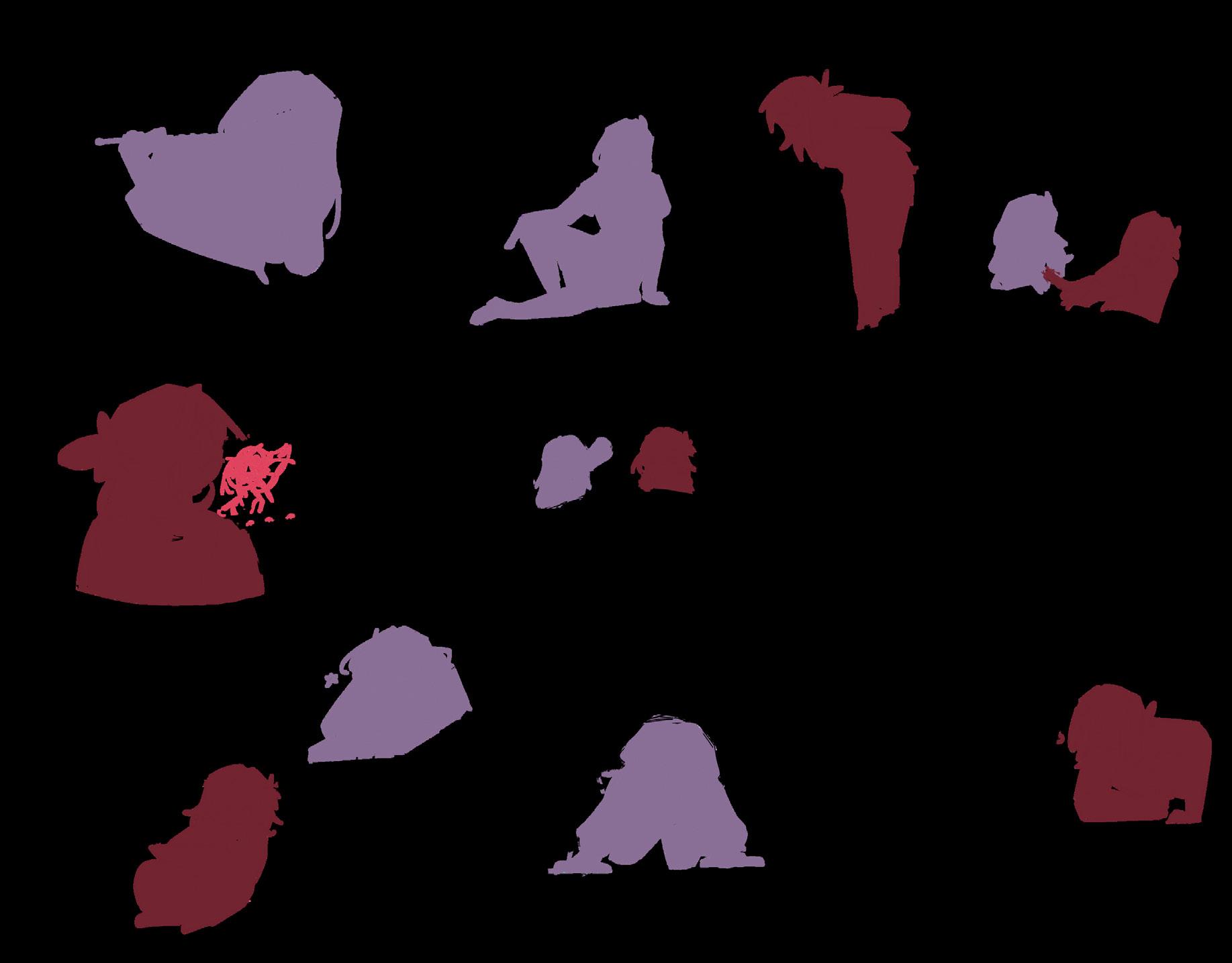

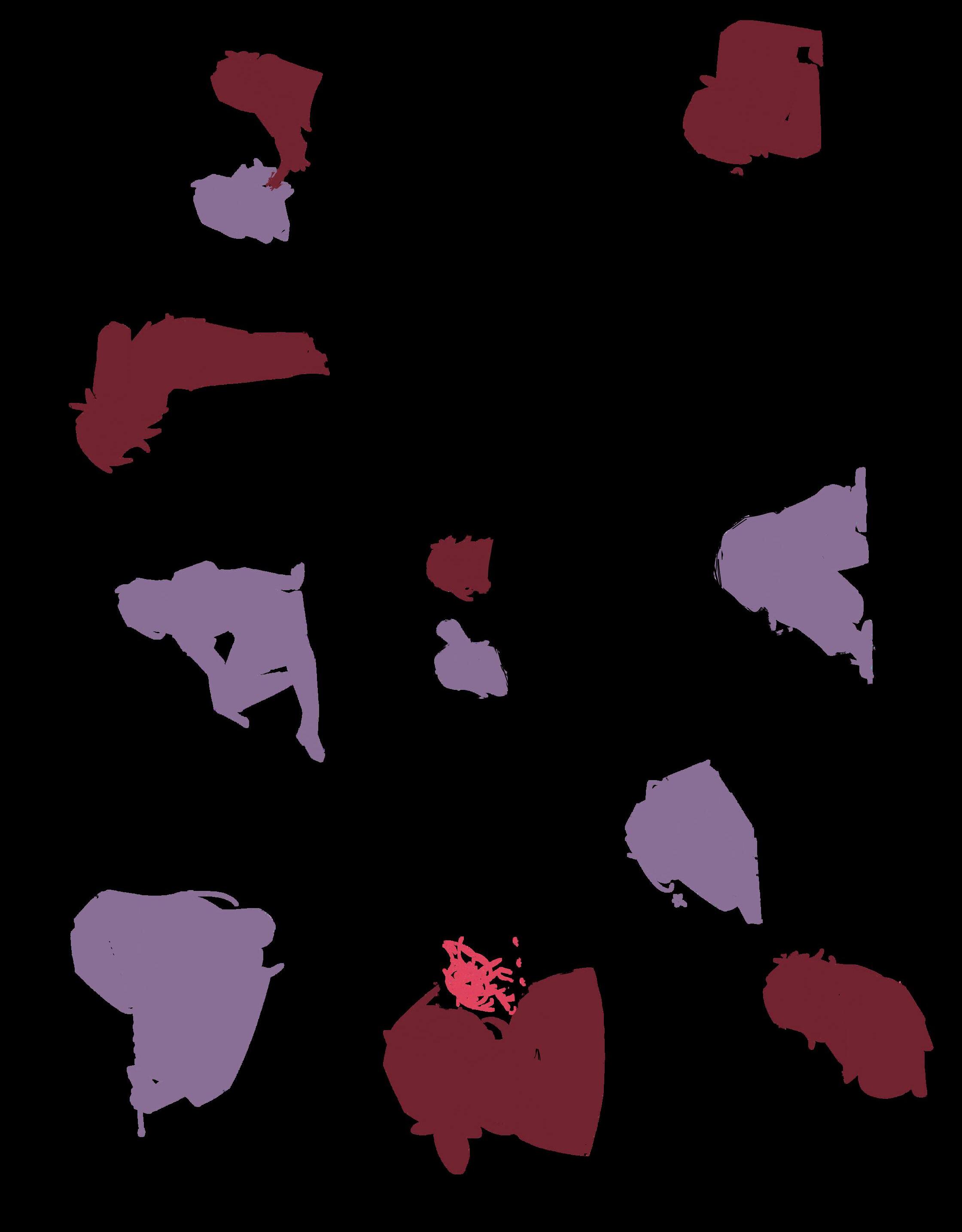
Congratulations to the DP Visual Art class of 2025!
Over the course of two years, our two fabulous DP Visual Art students created 8-11 artworks to showcase in their Final Exhibition. This catalogue contains their complete bodies of work, which were self-curated to demonstrate technical skill, communication of ideas and concepts, and thematic and stylistic connections to achieve a coherent show. A curatorial rationale accompanies each body of work to explain the context and concepts explored.
We hope you will enjoy this small but mighty exhibition!
With enduring gratitude,
Ms. Melanie Dueck & the Grade 12 Artists
The exhibition may contains content that may be difficult for some viewers. Viewers discretion is advised.
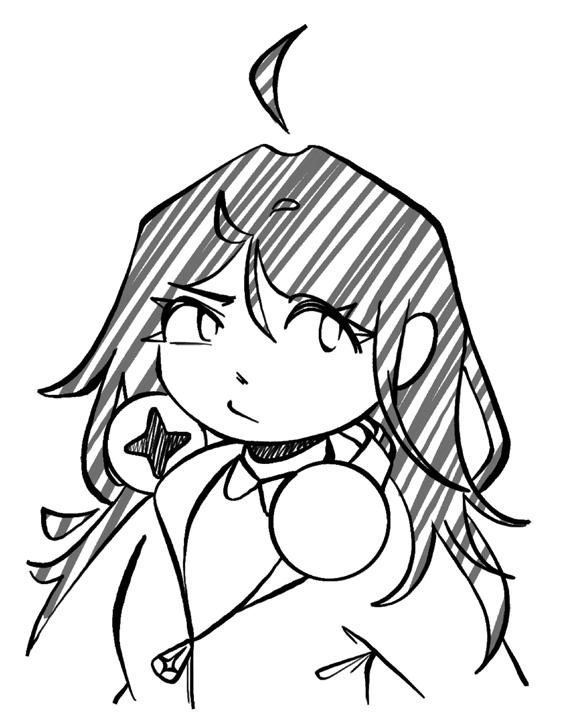
02: I’m On My Way Home (Con đang trên đường về)
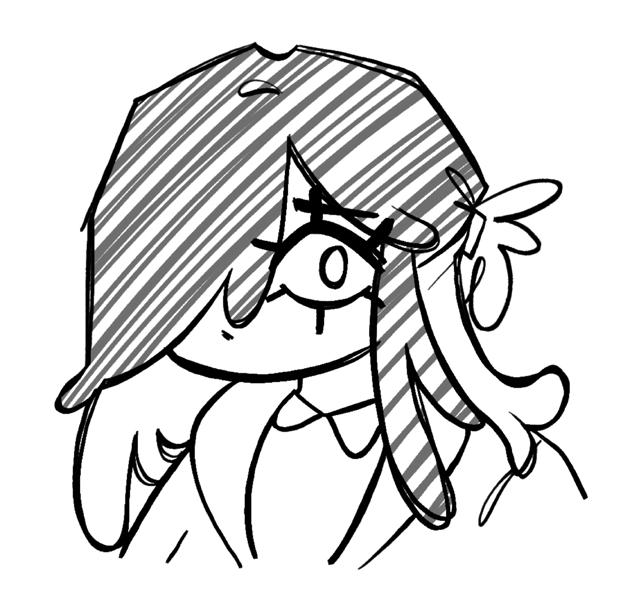
06: Glass Half Full, Glass Half Empty Wells
DP Visual Art Exhibition Tuesday, April 8, 2025
6:00 pm - 8:00 pm

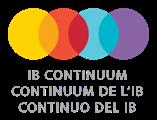
Nghi Truong
After experiencing the loss of my three remaining grandparents in the last two years, I have had to confront the truths of my detachment from my culture and the impermanence of life. My exhibition is a study into and an honoring of the culture, family, and history that has shaped who I am today. I intend to explore how our perspectives are shaped by our collective values through the lenses of loss and resilience, such as how we grieve collectively, and commemoration as a way of mourning. I explore loss in two different ways–as grief and as a loss of support–which originated from my realisations about the sacrifices and love my family has shown me that I took for granted. My culture has instilled a sense of gratitude for my heritage in me, which I use for my aim to provoke viewers to wonder and discover how they may be shaped by their community.
I use the design principle of repetition in my works, representing abundance and highlighting community. For example, an abundance of love is represented in the knitting of
the wire and textile sculpture Mending. Each knitted part is tied with the next, with each one representing the acts of love that build my character. In Offering Table, which depicts an isolated table with food offerings in a dark room, I used the imagery of a candle. It is a fragile source of light which highlights impermanence, accentuating a subtle tone of grief and sadness. This allows viewers to understand the unique feeling of grief–it is dull but striking simultaneously. This allows me to contrast later imagery of commemoration and acceptance, and to create a narrative that progresses with my artworks.
Viewers will bear witness to a journey of resilience, split across three walls in my 2D works: the first wall depicts “pure loss,” the second wall portrays understanding, placing grief in a cultural context, and the third wall conveys acceptance, expressing loss through celebration rather than despair of impermanence. For example, I used charcoal, a fragile medium, in you will heal and heal again placing it on the
first wall to depict impermanence. The other work displayed on the first wall, views from the living room couch, portrays me doing domestic work, representing my loss of parental support when they leave to go to Vietnam for months at a time. It is paradoxical as it looks busy and overwhelming yet it feels isolating as they are all just multiples of me. Then, the next wall features Offering Table which depicts a table with food offerings to the departed, a tradition in my culture. Finally, the third wall exhibits how grief can be outwardly commemorative and community-based rather than an isolating experience like in gone from my sight, where a crowd of my family members is seen moving towards a large monk in a surreal, dream-like composition.
As viewers journey through each wall displaying my 2D works, they simultaneously circle around the sculpture and interactive piece in the centre, Mending and Offering Table 2. This highlights the underlying message of my pieces, and how they are informed by the idea of commemoration. This central positioning also allowed me to emphasise my aim for my exhibition. Many of the figures inside my works have their back turned to the viewer, and their gaze never meets the viewer’s perspective. This signifies how the viewer is passive, not a part of the experiences I portray. This allows
me to create a sort of call-andresponse relationship between the viewer and my works; after witnessing my own journey along the walls, they can look to the centre and start their own.
Through my exhibition, I want the audience to explore their own emotions and how their environment or upbringing may have shaped them. I have done this by arranging my exhibition narratively, and using repetition and colour to highlight the unique experience of grief. I want the audience to ask themselves challenging questions that uproot their preconceived beliefs. My exhibition intends to encourage viewers to partake in a journey of discovering and commemorating parts of their culture and identity by juxtaposing passive viewing and interactive participation.


you will heal and heal again charcoal, pencil

Trees digital photography, photoshop

views from the living room couch photography, photoshop

gone from my sight collage with personal photos

Mending sculpture, chicken wire, yarn

Offering Table acrylic on canvas

Perpetuity watercolour on paper, fineliner
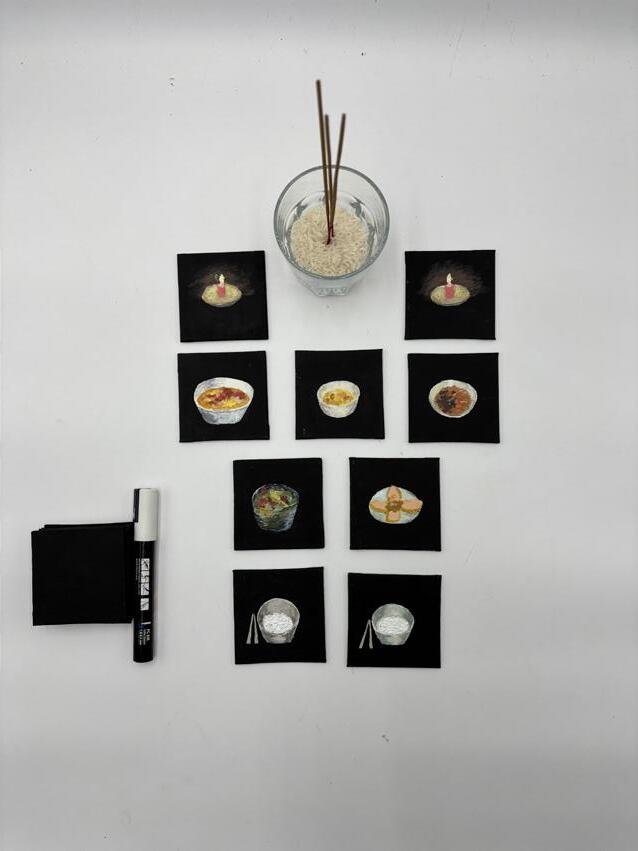
Offering Table 2 interactive piece_ acrylic on canvas, incense sticks, rice
For this exhibit, some main themes that are discussed through my work are self identity and my experience with neurodivergence, nostalgia, and grief and loss. Some of these themes cross over into each other additionally through the quandary that the “glass half full glass half empty” poses, along with following my life events chronologically. I wanted to discuss events in life that I found to be not objective in nature, which makes up the majority of my life. Within these subjective events, the decision on how someone views their life can make a large difference in how an event affects an individual. I convey these themes with the ‘glass half empty, glass half full’ quote, I have used this quote during times of chaos, telling myself to view the glass as a positive, half full. I attribute this quote to my mother, during the beginning of her ongoing battle with cancer, deciding to view her journey in the half full lense, instead of crumbling to the negativities. This mindset can be applied to a lot of experiences,
and I wanted to explore some of these through my work.
Through the theme of nostalgia, the piece Clarity may Fade, Feelings are Unalterable comes to mind, discussing my feelings of nostalgia around learning how to drive a manual car with my father. While this experience was a positive event, and a way to spend time with my dad, it felt like the ending of an era. This work appears near the start of my exhibition, following closely after those depicting more early childhood memories, symbolizing the end of my childhood. Nostalgia also comes up in Fragmentation, where I discuss my feelings surrounding the time my reality fell apart through my mothers cancer diagnosis. While this piece discusses my grief around the subject, it also symbolizes the reluctant ending of an era for me. Taking a different perspective to nostalgia, as it comes from a place of sadness, despite the change occurring being necessary for my growth as a person.
Another theme I discuss through my work is neurodivergence, through my recent diagnosis of ADHD. The first piece in this exhibition (except)ional depicts how I felt as a child, trying to fit into the school system knowing it was not made for people like me. I further this exclusion through how my exhibition is counterintuitively reading right to left. This is done to incorporate a sense of isolation, similar to how I felt in the school system. This piece precedes (be)longing, a piece also depicting the idea of fitting into something you fundamentally cannot. While this outlook is inclusive solely to the majority, giving this perspective a “glass half empty” lense, I tend to view inclusivity as a whole as net positive, therefore viewing this as “glass half full”. Both pieces are painted using acrylic, the first medium I was properly taught as a child, and a medium I was quite proud of. I connect this form of painting with one of the only subjects that I felt I was able to excel at when I was a child, this medium feeling very fitting to depict my childhood years.
Further through my life, the theme of grief and loss appears, and the conflicting perspectives on the topic. This theme comes up in several of my pieces, and acts as turning points
for the portrayal of personal identity within the course of the exhibition. For example Is Death the True Separation discusses my uncle’s death, and how I understood it. While generally death is portrayed as a horrible thing, there is also a beauty and life in the community at funerals, hundreds of people and flowers filling the space at my uncles. Another piece that focuses on this theme is Documents, this piece focuses specifically on the document that declared my moms cancer incurable, placing art on the actual documentation. I wanted to change the way documents were viewed with this piece using flowers similar to the piece on my uncle, bringing life to an item often associated with death. Using these as examples on how life and place all conflate, deterring from a straight path, following a circle of life instead.


(except)ional acrylic on canvas
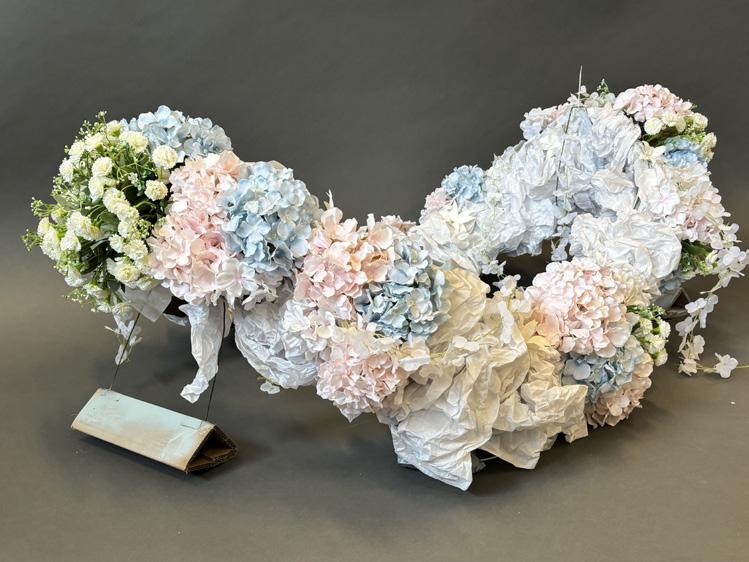
Is Death the True Separation cardboard, paper, wire, artificial flowers, florist foam
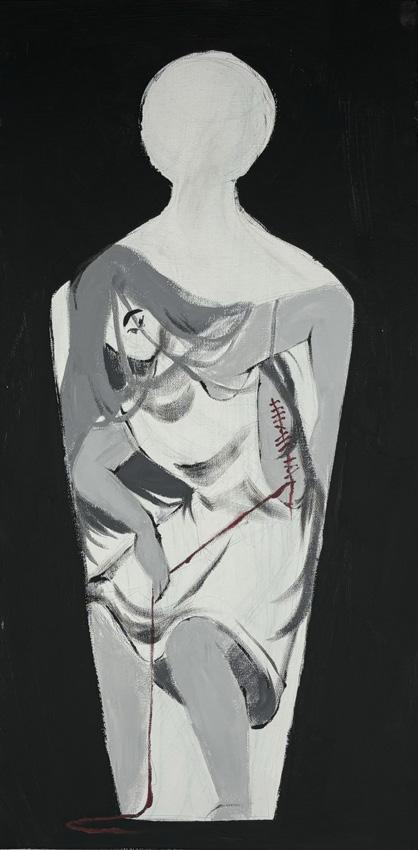
(be)longing acrylic on canvas
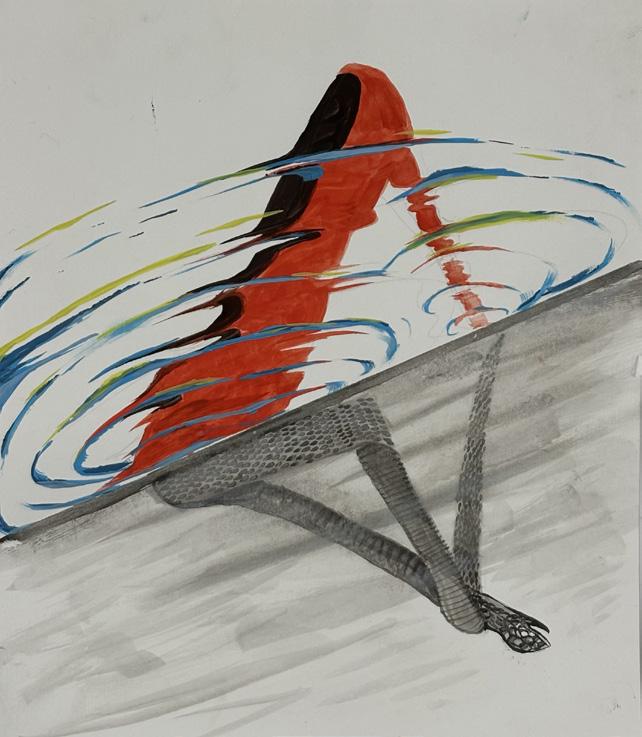
Ripples gouache and ink
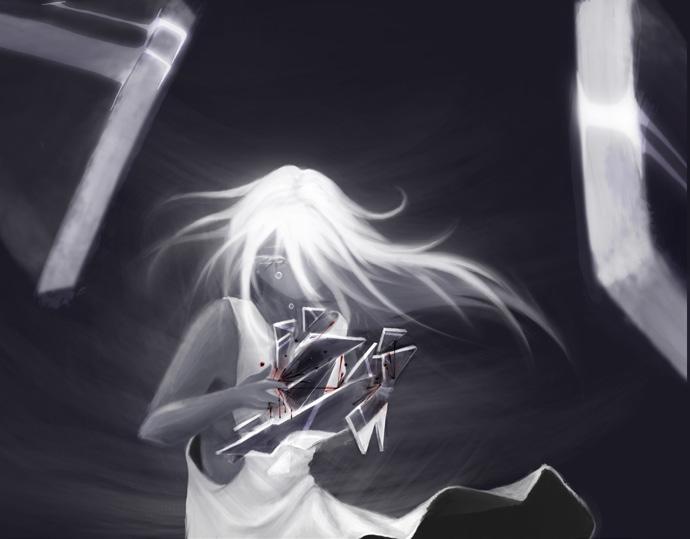
Fragmentation digital (procreate)

Flight digital (procreate)

Stretch digital (procreate)

Clarity may Fade, Feelings are Unaltered acrylic on canvas

The Bunnies and the Hares digital animation

